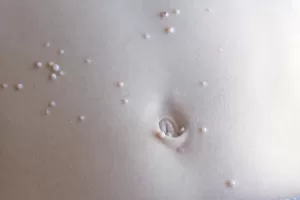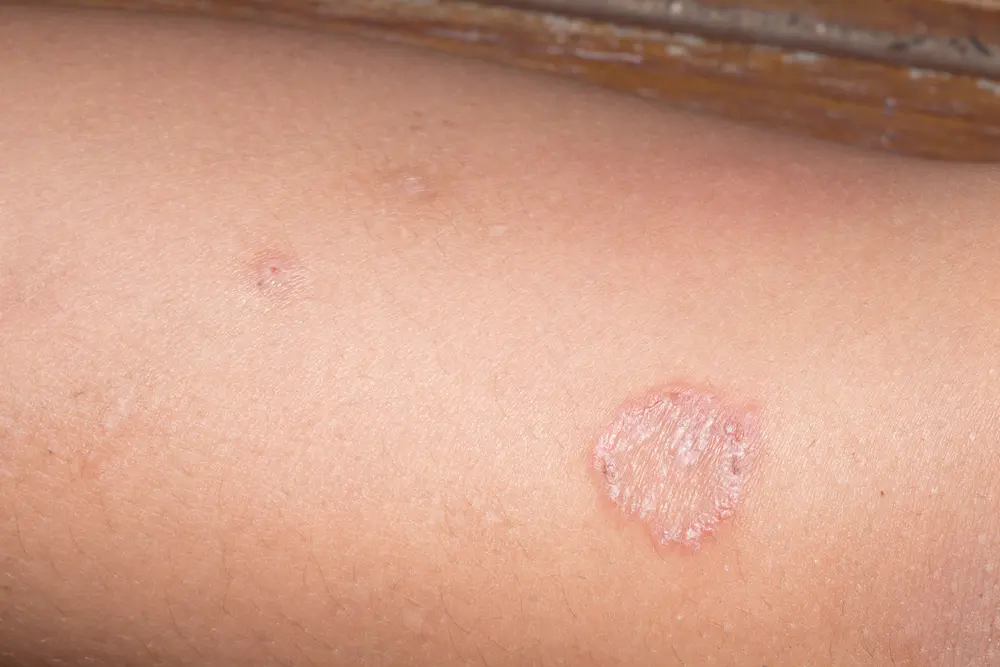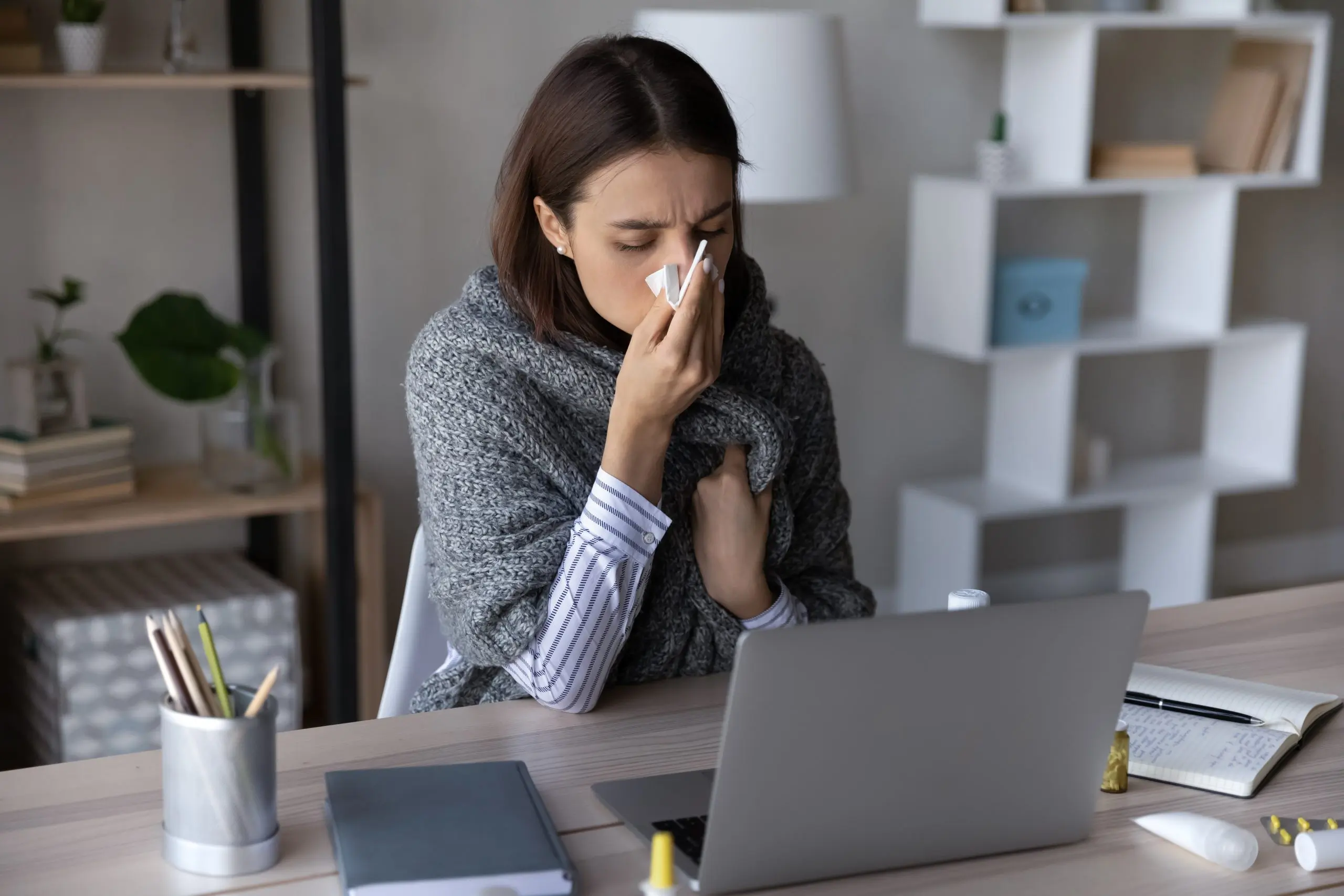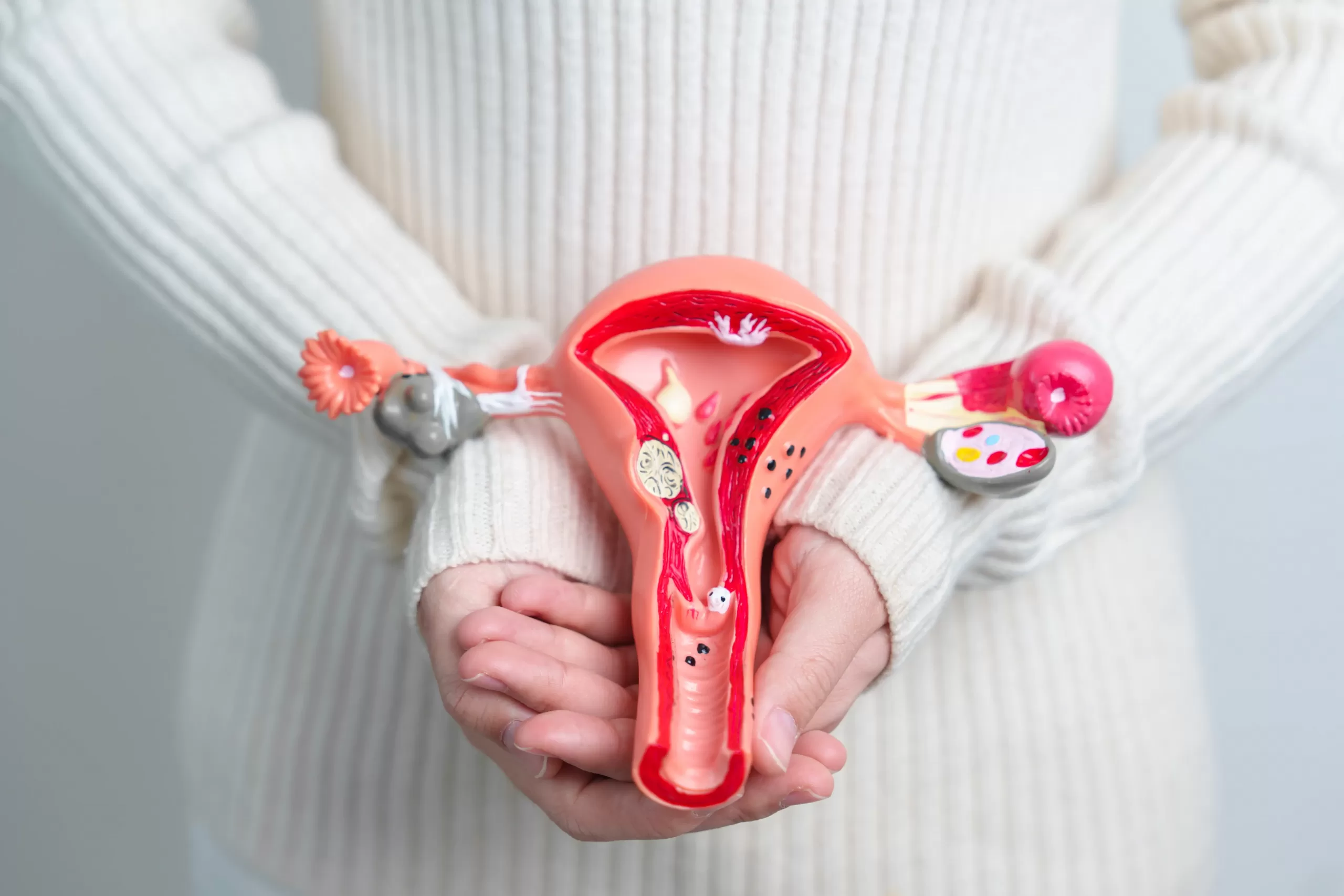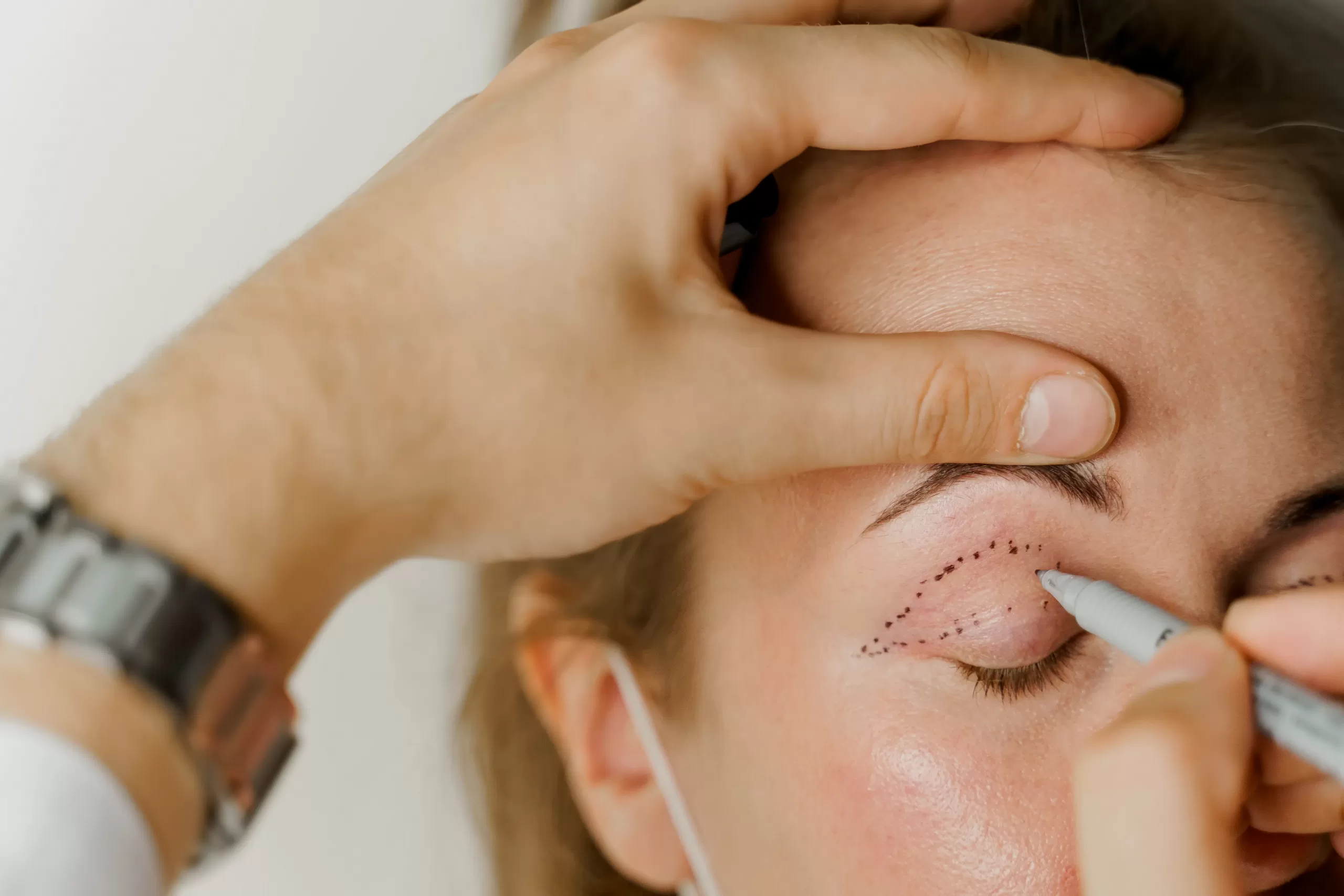Ringworm, molluscum & other rashes that cause confusion
Certain skin conditions are very common, yet people often come to the doctor with no idea what’s going on. For some of these, such as ringworm, the treatment is simple- and once you know the diagnosis, it may be possible to safely manage it at home. Of course, any rash that does not get better after a trial of treatment, should be assessed by a doctor. Here are a few minor skin conditions that people often ask doctors about.
Molluscum Contagiosum
This is a very common rash in children, but parents have often never seen it before. It starts as one or more raised rounded pearly bumps, which have a little dimple in the centre. It’s caused by a virus, and can last from a few months up to 2 years or so, until the immune system eventually clears it. Treatment is usually to leave the lesions alone! Whilst they can be frozen off with liquid nitrogen, this procedure is painful, and it’s likely that more will appear anyway. Much like warts, they do not make a child feel unwell. They are spread by touch, so it’s best to avoid sharing towels, and to pat the skin dry after washing rather than rubbing. Though they’re not itchy, kids will sometimes pick at them, which can cause bacterial infection- this may require antibiotic cream- if they become sore or weeping, a doctor’s opinion may be needed.
Keratosis Pilaris
Some people suffer from dry bumpy skin, particularly on their upper arms, but also on the thighs, buttocks a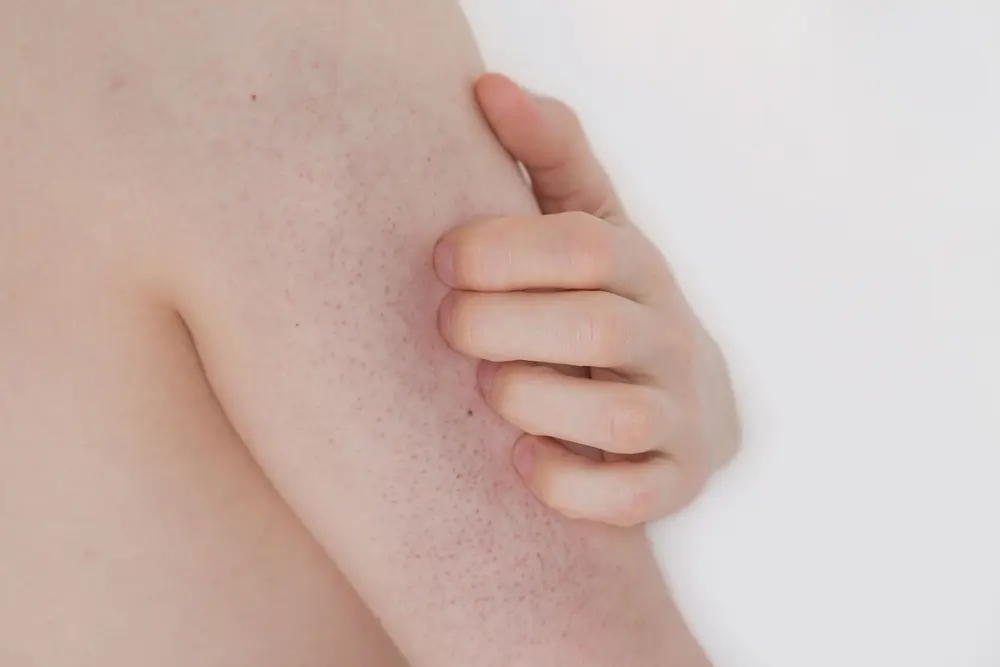 nd face. This is sometimes referred to as “chicken skin” but the medical term is “ Keratosis Pilaris”. Whilst it’s usually not itchy or painful, it can be unsightly and at times may look a bit red or inflamed- particularly in winter. Keratosis Pilaris is caused by a build-up of a protein called keratin in the hair follicles, leading to lots of tiny plugs or bumps. It’s not clear why this happens. Basic treatment involves moisturising regularly. If it’s still a problem, then there are creams available from pharmacies, which contain lactic acid, salicylic acid, urea, or a combination of these- they work by exfoliating dead skin cells. They may be too strong for younger children. Retinoid creams, which are also used for acne can be useful, though are unsuitable in pregnancy or breastfeeding.
nd face. This is sometimes referred to as “chicken skin” but the medical term is “ Keratosis Pilaris”. Whilst it’s usually not itchy or painful, it can be unsightly and at times may look a bit red or inflamed- particularly in winter. Keratosis Pilaris is caused by a build-up of a protein called keratin in the hair follicles, leading to lots of tiny plugs or bumps. It’s not clear why this happens. Basic treatment involves moisturising regularly. If it’s still a problem, then there are creams available from pharmacies, which contain lactic acid, salicylic acid, urea, or a combination of these- they work by exfoliating dead skin cells. They may be too strong for younger children. Retinoid creams, which are also used for acne can be useful, though are unsuitable in pregnancy or breastfeeding.
Ringworm
- Ringworm or “Taenia Corporis” is not actually caused by a worm! It’s a fungal skin infection which humans and animals (commonly dogs and cats) can get.
- In humans, ringworm tends to appear as one or more round or oval pink scaly patches anywhere on the body, which gradually develop and spread
- Sometimes the same fungus can cause redness and irritation in the skin folds, for example under the arms, neck and groin area.
- If it occurs on the scalp, it may cause a patch of hair to thin or fall out.
- Ring worm is very contagious, and spread by contact with the skin of an infected person (or animal), or something they’ve touched. Symptoms of ring worm may take a few weeks to appear following exposure.
- Ringworm usually responds well to a few weeks of regular topical antifungal cream.
- If it doesn’t respond to standard treatment, the diagnosis may not be correct and it should be discussed with a doctor.
Intertrigo
Another fungal rash, this one happens in areas of the body that get particularly sweaty or damp. It’s usually a pinkish red patch that develops along a skin fold, and it may smell unpleasant. Typical locations include under the breasts, under a fold of abdominal fat, the armpits or even under the chubby chin of a baby! As with ringworm, the treatment is usually an antifungal cream, often in conjunction with a mild steroid cream. However, if it’s weeping, sticky or smells bad, there may also be bacterial infection present, and an antibacterial cream may be needed too. If it’s severe, it may occasionally need oral antibiotics. If in doubt, or if it seems quite severe, you should see your doctor.
Atopic eczema
Atopic eczema often appears in children as dry itchy patches of skin in the elbow creases and behind the knees, though it can occur anywhere on the body. Most cases are mild and just require regular moisturising cream (ideally twice a day), and avoidance of soaps. Sometimes steroid creams may be needed if this is not working, so speak to your doctor if the rash is not settling. If the skin is scratched, bacteria can infect the area, which may cause weeping and crusts to occur, requiring topical or oral antibiotics. Whilst some people grow out of eczema, others will have it long term- the focus needs to be maintaining well moisturised skin, and treating flare ups with steroids as needed.
If you have a rash that is not settling, speak to your GP for further advice.
How to Get a Sick Cert Online Fast
How to Get a Sick Cert Online Fast Woke up with a sore throat or a pounding headache? We’ve all been there—too crook to drag yourself to the GP, [...]
What is a hysterectomy and when is it needed?
What is a hysterectomy and when is it needed? A hysterectomy is a surgical procedure to remove a woman's uterus (womb), usually performed by a gynaecologist. It is commonly [...]
Eyelid cosmetic surgery
Is Eyelid Cosmetic Surgery Right for You? Are your eyelids feeling heavy? Do they affect your vision, making everything blurry or giving you a sense of constant fatigue? Do [...]

